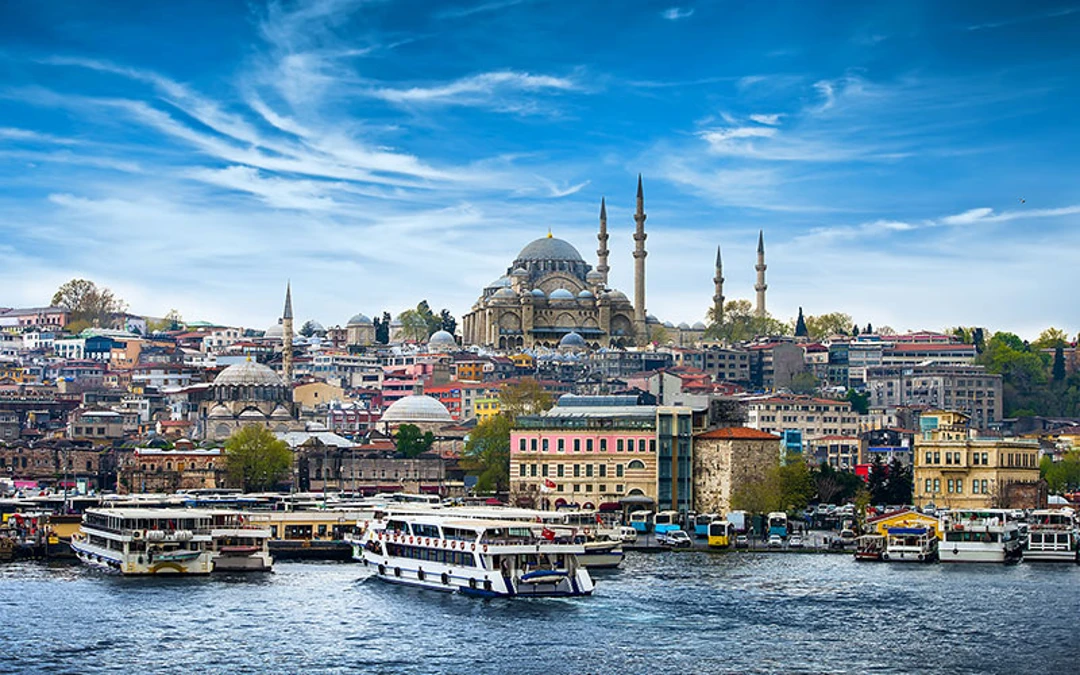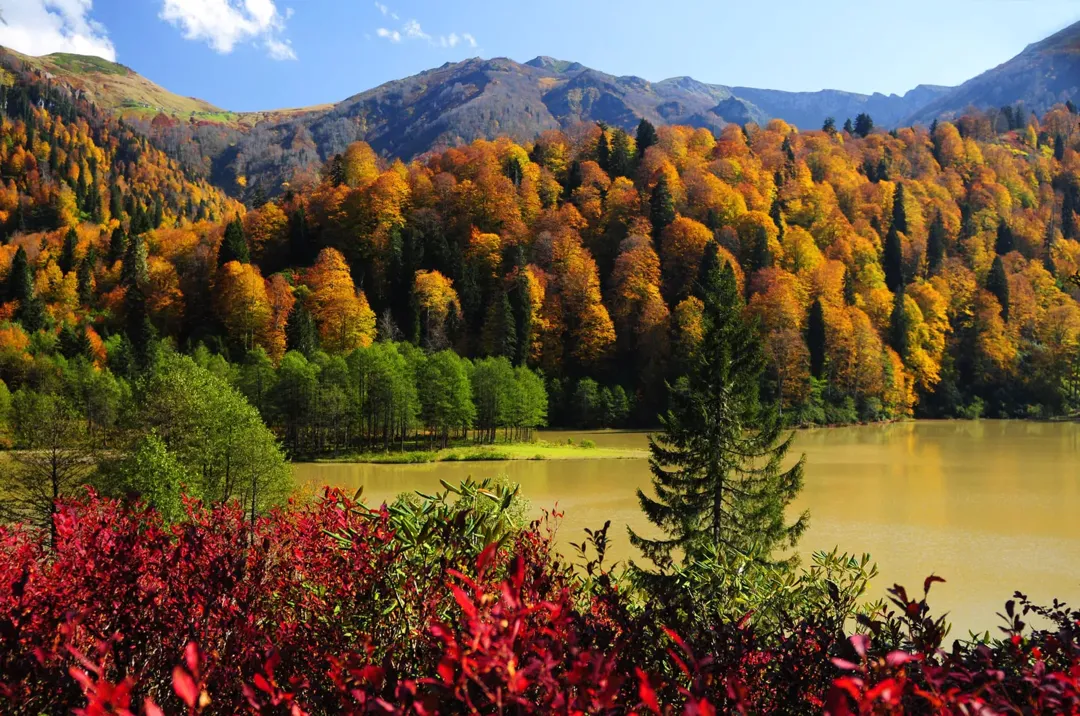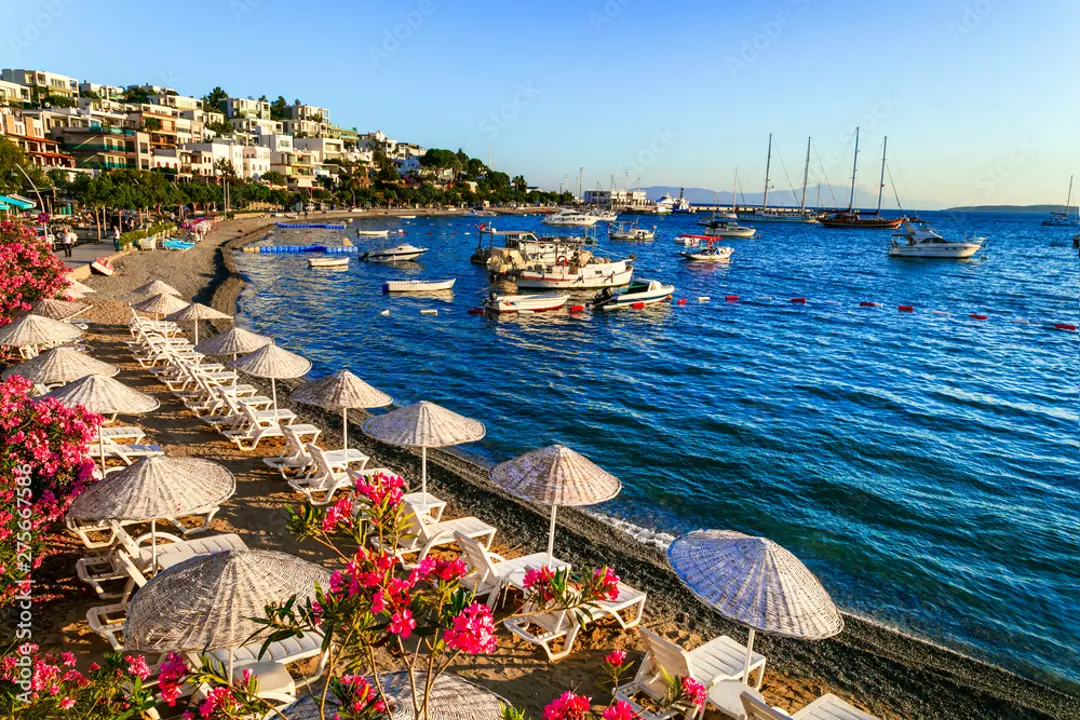Turkey has a varied climate, with a rich mix of weather patterns that can turn every trip into a wild experience.
This guide will help you understand what the weather is like in different areas of the country, what to expect in the major cities each season, and what key seasonal highlights there are to help you better plan your trip and pack.
To keep yourself connected on your trip, pick up an iRoamly Turkey travel eSIM, which has super-fast speeds that work no matter the weather to help you stay in touch.

Brief Overview of Turkey’s Climatic Zones
Turkey’s climate is as diverse as its terrain. There are three primary climatic zones in the country. The southern and western coastal areas have a Mediterranean climate, with hot, dry summers and mild, wet winters. Along the northern coast, close to the Black Sea, the climate is Maritime, with milder summers and wetter winters.
Inland, you’ll experience a Continental climate, with hot summers and cold, snowy winters. The variety of climates throughout the country makes travel in Turkey an adventure, as you’ll always find a destination in season.

Localized Weather Reports for Major Cities
Istanbul
Istanbul, as a city of opposites, also has the type of weather. Summer temperatures regularly soar to 30°C, making it easy to wander in the past, though you might find yourself breaking a sweat. Winters are cool and wet and can 449drop as low as 4°C, so make sure to pack a warm jacket.
For the most part, rain falls in the late autumn and winter, but make sure to take an umbrella and avoid the rainy season as you walk by the Bosphorus.

Antalya
Enjoy some Mediterranean sun in Antalya, known for its hot and dry summers that can reach 40°C. It’s an ideal destination for beach lovers, but beware of sunburn!
Winters are quite mild, with average temperatures that won’t drop below 10°C. It’s nearly entirely dry, but you may experience some light rain throughout the slightly cooler months; that being said, it won’t stop you from exploring this coastal town.
Cappadocia
It offers plenty for travelers looking for adventure. Summer can be warm but pleasant, with temperatures averaging 30°C (86°F).
This makes it the perfect time for early morning hot air balloon rides over the unusual scenery. Winters are cold and frosty, with plenty of snow blanketing the fairy chimneys and temperatures as low as -2°C (40°F).
Spring and fall are ideal for hiking, making them some of the best things to do in Cappadocia while enjoying cool weather and fewer crowds than summer.

Izmir
With summer temperatures averaging 35°C, the Mediterranean climate that dominates Izmir city in Turkey is perfectly hot.
It’s a busy place, so try to do your sightseeing either during the morning or late afternoon when it’s cooler.
Winters remain comfortable, albeit more rainy and around 12°C. Since it does get rainy in winter, bring a light raincoat so you won’t be unprepared to explore the city and the ruins.
Seasonal Weather Patterns and Activity Recommendations
Spring in Turkey
The spring is really pleasant, making it a great time to get outdoors and enjoy the natural splendor. The weather is warm but not too hot, and the countryside gets filled with wildflowers. It’s the ideal season to go hiking in Cappadocia or stroll around the green spaces in Istanbul. In April, be sure not to miss the Tulip Festival. It’s a visual feast!

Summer Adventures
Summer is hot and happening, perfect for the beach. Hit the Turquoise Coast for pristine beaches and gorgeous weather. Take a boat trip on the toasty Mediterranean or lounge along the shores of Antalya. If you’re in town during June, don’t miss the Aspendos Opera and Ballet Festival. Watching a show under the stars is lovely!
Autumn Charms
Turkey is lovely during Fall, with the country painted orange. The cities are not quite as full, so it’s a great season to visit the country’s historic cities. Additionally, for a taste of the wine harvest, Cappadocia is a great spot. Don’t miss the International Wine Festival, featuring delicious Turkish wines and foods (October).

Winter Wonders
Winter is a nice change of pace in the snow-covered mountains. You can partake in winter sports in the Uludağ Mountains and marvel at the snowfall in Cappadocia too. One of my favorite activities is to visit the hot springs in Pamukkale to gather together a warming of the bones. And if you’re in Istanbul, enjoy the beautiful New Year celebrations.
Comparative Regional Weather Analysis
Turkey has a lot of regional variation in its weather. For instance, on the coast you’ll experience sunny beaches and cool breezes. Coastal weather can be warm and sunny with cool breezes, great for anyone that loves the ocean. Thanks to the Mediterranean, expect hot, dry summers and mild, wet winters, making it the perfect destination for beachgoers such as in Antalya. Head inland, though, and it’s a different story. Inland has hotter summers and cooler winters with snow, like in Cappadocia, the perfect place for winter fun.

And if you want a blend, head north toward the Black Sea coast. It has a Maritime climate, which means shorter summers and wetter (even snowy) winters. Again, that’s all good if you’re seeking that verdant lushness! Some, like Istanbul, contain multiple climate variants due to their geographical location. Turkey really has it all from sunny to snowy to rainy — you just need to get to the right place depending on what you’re after. Think about that before you go!
Interactive Weather Tools and Real-Time Updates
There are a lot of great digital resources to help plan a trip to Turkey. One of my favorites is aninteractive weather map. Here you can get a closer look at the weather and zoom in to see the forecast in specific places. Wondering if it’s sunny in Izmir or rainy in the Black Sea region? These maps offer these real-time details so you’re not surprised.

Also, trend analysis tools are a great resource. They display historical weather data, and can forecast weather trends over days or weeks. That way, you can determine if it’s a good day to hit the beach in Antalya or go sledding in Cappadocia. Most importantly, they’re typically free and available as an app on your phone.
If you’re a trip planner by heart and love to know what the weather will be like on the fly, don’t worry: there are a lot of weather apps that cater to travelers. You can get hourly predictions and know exactly what the weather’s going to be like as you head out for your city tour or nature hike. Just an app away from making sure you are dressed and ready for the weather, you can easily navigateTurkey’s diverse climate like a champ.
Quick Travel Clothing and Packing Tips by Season
Spring Travel Tips
Spring is probably my favorite time of year in Turkey. Everything is coming back to life, in full bloom, yet the wind and the weather are still quite mild. Just be sure to pack layers since it can be chilly in the mornings while warming up in the afternoons. You’ll also want to bring comfortable shoes for walking through gorgeous gardens or around ancient ruins, as well as a light jacket and compact umbrella for the odd spring shower.
Summer Packing Essentials
Come summertime, light and breezy is your motto. You’ll want to wear natural, breathable materials, such as cotton and linen, in order to stay cool in the hot, sunny weather (especially along the coast). Be sure to take a wide-brim hat and sunglasses with you to shield you from the sun. While for the beach sandals are great, you should bring some good walking shoes for strolling the cobbled streets and hiking.

Autumn Wardrobe Advice
Autumn is when the scenery looks like a warm painting. Just be sure to pack a few light jackets and sweaters, as the weather can be hit or miss. You might wake up to bright sunshine only to have it turn to colder winds by day’s end so make sure to pack layers to manage the fluctuations. A warm scarf can also help do the trick and help you look fashionable.
Winter Gear Guide
In the winter, it can get quite cold (and snowy) in Turkey, especially inland. You will definitely want a heavy coat and thermals to keep warm, especially if you’re visiting Cappadocia and want to see the snow-covered fairy chimneys. Waterproof boots are recommended. Gloves and a hat will also help keep you warm so you can enjoy the winter weather!

Conclusion
Finally, as we wrap up our look at Turkey’s climates and seasons, it’s obvious that Turkey has a little something for everyone, weather-wise, throughout the year. Whether you’re looking to soak up some sun along the Mediterranean in Antalya or to experience a winter wonderland in snowy Cappadocia, you’re never far away from a new experience.
Armed with this weather knowledge and some easy tools, you’ll be all set to plan your trip and enjoy all the different temperatures that Turkey has to offer. So, pack wisely, embrace the variety, and have a truly unforgettable trip to Turkey.
